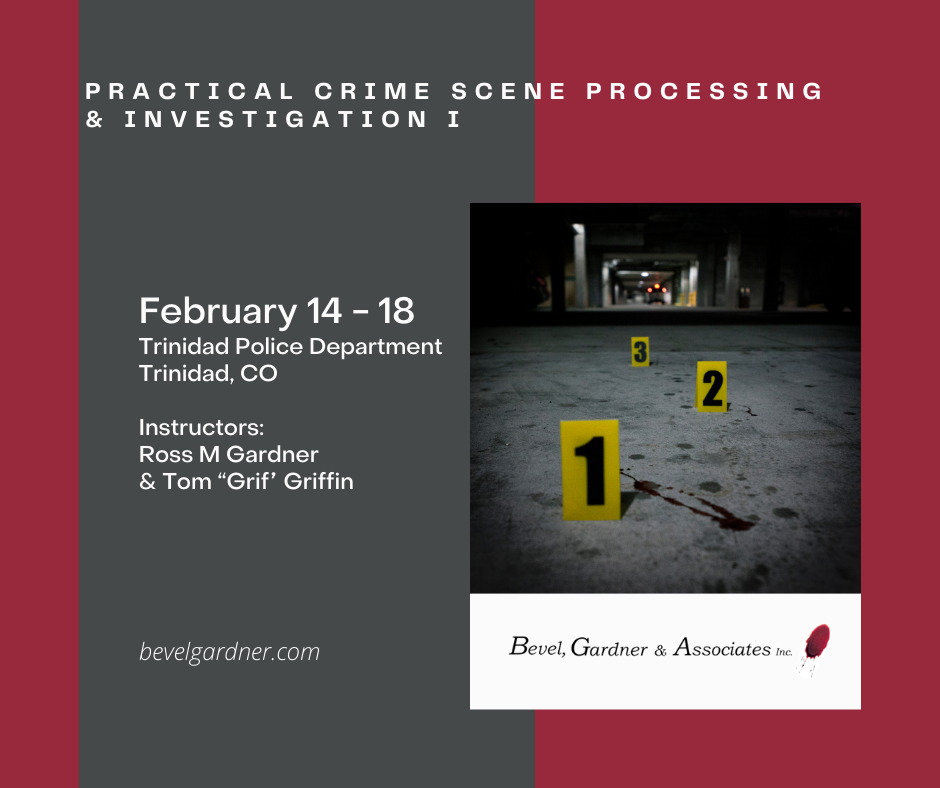Crime Scene Processing in Trinidad, CO and Upcoming Courses for spring 2022
Read MoreBlog
Bevel Gardner & Associates forensic consulting and education providing instruction across the country and around the world. Located in Oklahoma, we are the largest independent forensic consulting company in the US. Follow our blog.
New Year, New Training - Bevel, Gardner & Associates Expert Training Courses
The BPAPD program incorporates three distinct training courses of one week each. A Level I course introduces the student to bloodstain pattern analysis with significant concentration on basic pattern recognition and documentation. This Level II course concentrates on proper application of scientific method, experimental design and clothing examinations. Between the Level II and Level III course the student participates in a mentorship program. The mentoring program includes requirements for both case analysis and research design/completion. The Level III course includes a pre-course case analysis and then on-site course concentration on experimental design, and court room presentations.
Objectives:
Demonstrate the ability to use and apply scientific method.
Demonstrate the ability to apply experimental design in support of bloodstain pattern analysis.
Demonstrate the ability to evaluate bloodstain patterns on clothing.
Recognize and demonstrate how Luminol and LCV are used to enhance latent blood patterns.
Demonstrate the ability to evaluate a complex bloodstain pattern scene.
Demonstrate the ability to present bloodstain pattern analysis conclusions in a logical written format.
The course is intended to develop a fundamental knowledge of crime scene processing technique. The course will illustrate to the student the six basic activities of crime scene processing and the sequence of those activities. The course concentrates on these core concepts: assessing, observing, documenting, searching and collecting, but also includes lectures on advanced techniques such as alternate light source utilization, bloodstain pattern recognition and trajectory analysis. It will introduce the student to the function and role of crime scene analysis.
Objectives:
Demonstrate knowledge of the six basic activities involved in crime scene processing and the general order of these activities.
Recognize the general categories of physical evidence, what a crime laboratory can do with this evidence and accepted methods of recovery.
Demonstrate knowledge of the critical aspects of assessing a crime scene, including scene containment, crime scene team composition considerations, choosing the most effective crime scene search technique and scene hazard identification and mitigation.
Describe the different scene mapping methods.
Describe the three basic photographs utilized for crime scene documentation.
Describe and demonstrate the basic elements of crime scene narratives.
Recognize basic bloodstain patterns.
Discuss the function, theory and application of an alternative light source in crime scene processing.
Recognize the affect of effective crime scene documentation on crime scene analysis.
Describe basic methodologies of crime scene analysis.


